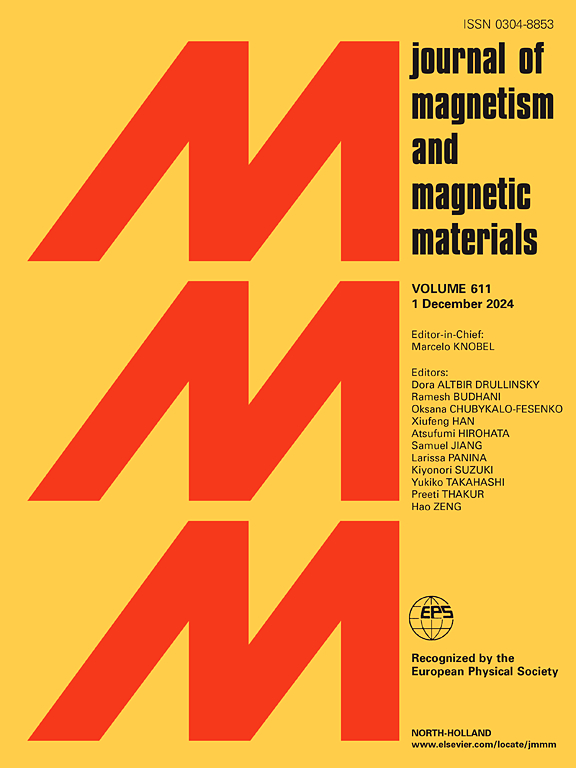Effect of plastic damage orientation with respect to magnetic flux pathway on magnetic performance for NGO electrical steel
IF 2.5
3区 材料科学
Q3 MATERIALS SCIENCE, MULTIDISCIPLINARY
引用次数: 0
Abstract
Non-grain-oriented (NGO) electrical steel laminations are used in electric motor stators and rotors and are usually produced by stamping the complex shape from steel strip. It is known that the cut-edge damage, an unavoidable result of this process, adversely affects magnetic properties. During motor operation, magnetic flux flows through these regions, with pathways that may align parallel or perpendicular to the damage. This paper investigates the effect of flux orientation relative to cut-edge damage on the magnetic performance using both experimental measurements and 3D finite element modelling (FEM) for M250-35A NGO electrical steel. A novel tensile test specimen was designed to allow single-sheet tester (SST) samples (300 x 30 x 0.35 mm) to be extracted with comparable plastic damage levels (average 6.2 % strain) but varying orientations to the magnetic flux pathway. FEM simulations, developed in COMSOL Multiphysics, of the SST samples used BH curves for damaged and undamaged material to determine the magnetic behaviour for the SST samples with the different damage orientations. Experimental and modelled results showed consistent trends, revealing that both damage orientations deteriorate the magnetic performance compared to undamaged material, with damage perpendicular to the flux pathway giving more severe degradation. This effect was particularly notable at the BH curve knee point, where the perpendicular damage sample displayed a 20 % lower magnetic flux density than the parallel damage sample. These results highlight that motor performance will be affected not only by the extent of cut-edge damage but also by the design of the laminations through the magnetic flux pathways relative to the cut-edge damage, especially in areas operating below magnetic saturation.
磁通路径塑性损伤方向对NGO电工钢磁性能的影响
本文章由计算机程序翻译,如有差异,请以英文原文为准。
求助全文
约1分钟内获得全文
求助全文
来源期刊

Journal of Magnetism and Magnetic Materials
物理-材料科学:综合
CiteScore
5.30
自引率
11.10%
发文量
1149
审稿时长
59 days
期刊介绍:
The Journal of Magnetism and Magnetic Materials provides an important forum for the disclosure and discussion of original contributions covering the whole spectrum of topics, from basic magnetism to the technology and applications of magnetic materials. The journal encourages greater interaction between the basic and applied sub-disciplines of magnetism with comprehensive review articles, in addition to full-length contributions. In addition, other categories of contributions are welcome, including Critical Focused issues, Current Perspectives and Outreach to the General Public.
Main Categories:
Full-length articles:
Technically original research documents that report results of value to the communities that comprise the journal audience. The link between chemical, structural and microstructural properties on the one hand and magnetic properties on the other hand are encouraged.
In addition to general topics covering all areas of magnetism and magnetic materials, the full-length articles also include three sub-sections, focusing on Nanomagnetism, Spintronics and Applications.
The sub-section on Nanomagnetism contains articles on magnetic nanoparticles, nanowires, thin films, 2D materials and other nanoscale magnetic materials and their applications.
The sub-section on Spintronics contains articles on magnetoresistance, magnetoimpedance, magneto-optical phenomena, Micro-Electro-Mechanical Systems (MEMS), and other topics related to spin current control and magneto-transport phenomena. The sub-section on Applications display papers that focus on applications of magnetic materials. The applications need to show a connection to magnetism.
Review articles:
Review articles organize, clarify, and summarize existing major works in the areas covered by the Journal and provide comprehensive citations to the full spectrum of relevant literature.
 求助内容:
求助内容: 应助结果提醒方式:
应助结果提醒方式:


